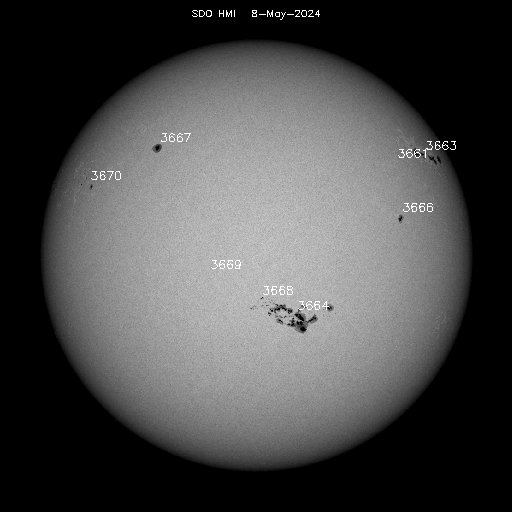
M51 800 sec. Sligthly smoothed, logarithmic scale (processed with DS9).
The orientation is now almost correct (i.e. N nearly on top, E to the left)

Left:M51, 800 sec image resulting from two guided exposures of 300 and 500 sec. Right: a single 200 sec unguided exposure of M81. Raw images (no colour composition)
Last night, I performed my first successful tests with a (rudimentary) autoguiding arrangement on top of my C6N-ASGT telescope (6-inch reflector on CG5-GT mount). The guiding hardware consists of a Meade 8 x 50 finderscope piggybacked on the Celestron OTA and an old compact CMOS camera used in webcam mode. I removed the small fixed focus objective (and IR filter) and attached a 0.96' eyepiece barrel that fits perfectly to the finder helical focuser. Though the camera is not very sensitive, the wide field of the finderscope and the movement range provided by the mounting rings usually allow to find a star bright enough to permit guiding. The software used is PhD guiding. The mount control is done using the ASCOM drivers. An old (2003!) Pentium 4 laptop (2.66 GHz, 768 MB ram, 40 GB disk) has revealed enough to run both the guiding system and the Orion Starshoot II CCD camera software (MaximDL).

I started doing a careful polar alignment: 2-star alignment with 2 calibration stars, then polar align and finally repeated the 2 stars+ 2 calibration stars procedure. As a result of this fine alignment, I was (for the first time) able to do a relatively long (200 sec) unguided exposure (M81 image on the right). The first guided tests were unsuccessful: the star SNR was too low to permit guiding. Eventually I realized that the problem was related to poor focus. Then I decided to try focusing a bright star (Mizar) moving the finderscope helical focuser until reaching maximum S/N. Moreover, I changed a couple of PhD parameters, namely the duration of the calibration pulse (from 750 to 1000 msec) and the minimum fraction of pixel to move the mount (from 0.15 to 0.10 pixel). These parameters are better suited to the short focus guiding system. Actually the pulse duration can be further increased (to say, 1200 msec) to reduce the number of calibration steps required. Another important thing to do is to force calibration at each target, unless you move between very close areas in the sky.
Taking all these things into account, I went to one of my favourite targets: M51. One of the problems with this object is the relative scarcity of bright nearby stars. Anyhow I managed to find a suitable one by moving the finderscope across the range allowed by the mounting rings. I set the webcam exposure time to 4 sec (some 30 frames are stacked to get one exposure), made a dark frame and a very dim point appeared in the webcam field. It was enough to make the calibration and finally start guiding. The software kept the star on spot very accurately in a 300 sec exposure, so I increased the time to 500 sec with identical result. A third, 600 sec exposure was aborted due to the exhaustion of the webcam battery so my experiments ended then. But I'm really happy with these results!














